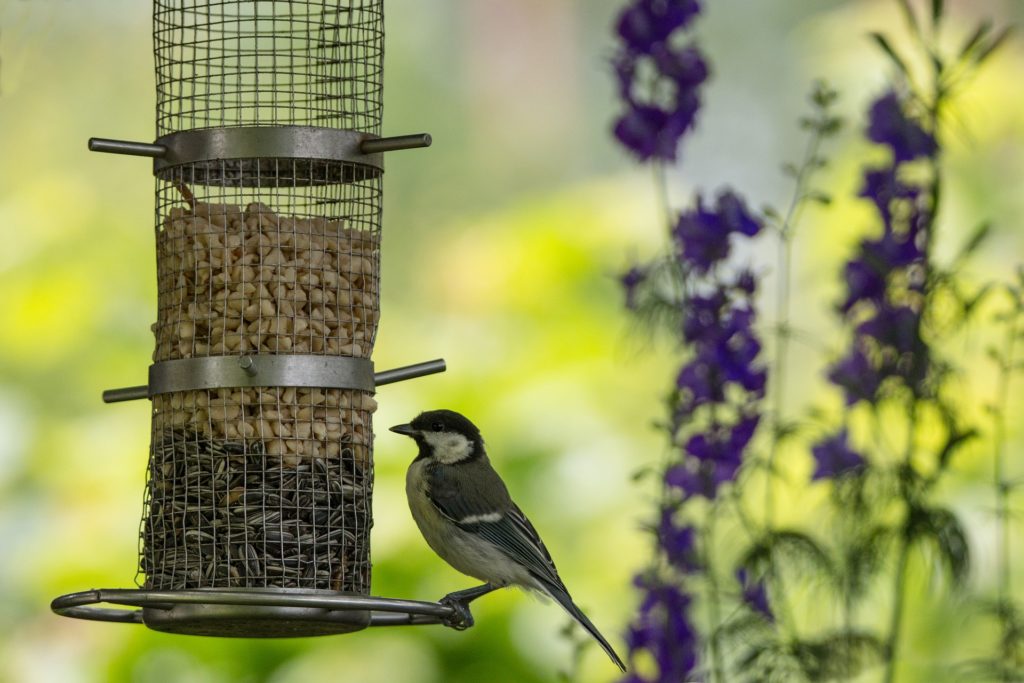The Joy and Trouble of Feeding Wildlife
I once had a sparrow alight upon my shoulder for a moment, while I was hoeing in a village garden, and I felt that I was more distinguished by that circumstance that I should have been by any epaulet I could have worn. – Henry David Thoreau

The beauty of nature is awe-inspiring and magical. It is no wonder that we try to get as close to it as possible. While feeding wildlife can be rewarding, there are precautions you should take in order to ensure your safety as well as that of the animals you are feeding.
“You, of course, don’t ever want to feed any kind of a dangerous animal like a bear or a wild hog,” warns Dr. Alice Blue-McLendon, clinical associate professor at the Texas A&M University College of Veterinary Medicine & Biomedical Sciences. “But some animals such as birds and squirrels are perfectly acceptable to feed and can be a great joy to watch.”
It’s important to note that while feeding some animals is acceptable it should always be from at a distance.
“Never feed wild animals out of your hand. Any animal can mistake your hand for food and you don’t want to be accidentally bitten,” advises Blue-McLendon. “You also don’t want an animal to think food is at the end of your fingers because they might think you have food when you don’t or that your hand is part of the food.”
Because of these potential dangers it’s best to feed animals out of feeders or to throw it down as you would to birds in ponds. There are many specialized feeders such as bird feeders and corn cob stations that can feed the majority of birds and squirrels.
“If you are going to feed any animal it is best that you give them food that is formulated for them or stick with fruits and vegetables,” states Blue-McLendon. “Most feed stores carry special food for ducks, birds and other wild animals.”
If you are feeding animals such as peacocks and ducks by throwing food toward them there is a possibility that they may become aggressive if they know you have food.
“If you encounter an aggressive animal you should first try noise-aversion to chase them off. If they don’t respond then just put the food down and walk away,” advises Blue-McLendon.
While feeding wildlife from feeders is the best way to protect your body, if you are feeding animals outside your home they can still damage your house and landscape.
“You want to be careful when attracting any animals to your house,” warns Blue-McLendon. “Squirrels can chew on houses and deer have been known to get into landscaping and eat valuable plants such as roses and daylilies.”
Once these animals come into urban settings and destroy property they are known as nuisance wildlife and can cause hundreds of dollars of damage. Because this is a problem in many areas there are a variety of companies that deal with the removal of these animals. However, if you do have a problem the best way to get rid of the animals is to simply remove the food source.
“I would advise that if you live in the city you only feed birds. Squirrels can still be a problem around bird feeders, but they should not draw other wildlife,” explains Blue-McLendon. “It really depends upon a person’s situation though, because if you live in the country and you want to attract things like deer you can find landscaping and plants that are deer-resistant.”
Another thing to consider when feeding wildlife is that some animals, such as raccoons, skunks, foxes and opossums, can carry rabies and other zoonotic diseases that can be spread to domestic pets.
“Some zoonotic diseases can cause severe neurological disease for other animals so it’s important to keep wild animals away from your pets,” states Blue-McLendon. “They don’t even have to bite your pet to infect them. For example, one intestinal parasite that raccoons carry is a cause of neurological problems in animals.”
Watching squirrels climb up trees and beautiful birds flying around your home can be an entertaining and peaceful experience. By making sure that you are protecting yourself, your property and the animals you can make sure that the experience continues to be a positive one.
Pet Talk is a service of the College of Veterinary Medicine & Biomedical Sciences, Texas A&M University. Stories can be viewed on the Web at vetmed.tamu.edu/news/pet-talk. Suggestions for future topics may be directed to editor@cvm.tamu.edu.


